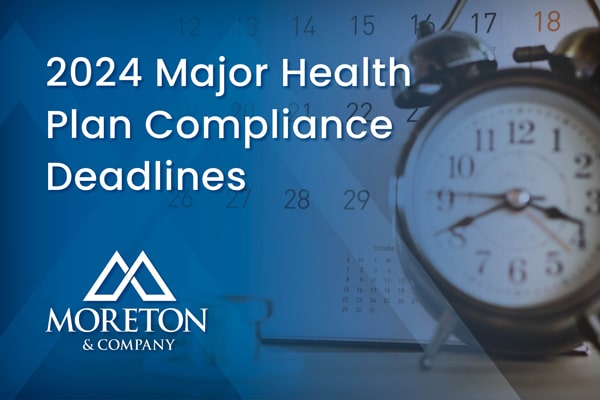
How Many HR Professionals Does My Organization Need?
How many HR professionals does your organization need? It’s a hotly debated topic, with many relying on metrics to guide them in making this decision. One of the most common metrics organizations use is the HR-to-employee ratio. If properly analyzed, this ratio can aid employers in meeting their HR needs and benchmarking their organizations against others. It can help employers determine not only how to fill their HR staffing needs, but also analyze how well their HR professionals are delivering on organizational goals.
What is the HR-to-Employee Ratio?
The HR-to-employee ratio is calculated by dividing the total number of full-time HR professionals by the total number of employees in an organization and then multiplying that number by 100. For example, the HR-to-employee ratio for an organization with one full-time HR professional and 73 employees would be 1.37. As the total number of employees increases, the HR-to-employee ratio usually decreases, though this varies by organization.
The HR-to-employee ratio can guide an organization’s decisions regarding HR staffing, including whether its HR department needs additional support, is overstaffed, or can delegate or outsource certain functions. It can also help determine an organization’s HR efficiency, as a higher ratio could indicate a lower efficiency in delivering HR services.
According to Bloomberg’s HR Department Benchmarks and Analysis report, annual survey results revealed the median HR-to-employee ratio is 1.4 full-time HR professionals per 100 employees. This ratio is currently at an all-time high, as it previously peaked in 2013 at 1.3 HR professionals per 100 employees. The recent increase in the HR-to-employee ratio is primarily the result of unprecedented workforce growth and employers’ need to address the increased HR burden on their organizations.
Smaller employers (organizations with fewer than 250 employees) often have a significantly higher HR-to-employee ratio, because of the minimum number of HR professionals required to perform core HR functions, such as recruiting and benefits administration. Smaller organizations in the early stages of growth often need to focus more on people management than more established organizations, resulting in a higher ratio. As organizations grow, the HR-to-employee ratio tends to decrease because of the cost advantages employers gain by increasing the size of their organizations.
Ratio Factors
Determining how many HR professionals an organization requires ultimately depends on their specific needs and growth strategy. While the HR-to-employee ratio can guide employers as they make HR staffing decisions, there are several factors that may influence this ratio:
- Technology: Automating HR operations will reduce an organization’s need for HR professionals, lowering the HR-to-employee ratio. Organizations that invest in digital and self-service HR tools can improve overall accuracy and empower managers and employees to self-manage many HR functions, allowing HR professionals to focus on higher-value work.
- HR involvement: The role of HR can influence the HR-to-employee ratio. For example, a highly operational HR department may require more HR professionals to perform a variety of functions, such as employee training and development, recruiting, onboarding, benefits, and compliance.
- Budget: A larger budget allows an organization to staff more HR personnel, while a smaller budget can restrict the total number of employees the organization is able to hire, thus impacting the HR-to-employee ratio. Increasing the size of an HR department will often result in a higher ratio; however, a high-functioning HR department will ideally help reduce costs elsewhere in an organization.
- Industry: The HR-to-employee ratio generally varies by industry, as some sectors require more HR involvement than others, resulting in a higher ratio. Industries such as consulting, insurance, and finance typically have higher ratios than manufacturing, construction, retail, and health care because sectors with highly skilled professionals tend to require more training and personal development to engage and retain staff compared to their lower-skilled counterparts.
Other factors that may impact an organization’s HR-to-employee ratio include whether the organization is centralized or decentralized, where employees are located (e.g., a single location versus multiple locations), and the level of employee sophistication. The HR-to-employee ratio only accounts for full-time HR professionals, so there may be a gap between the metric and actual organizational needs.
Does a Smaller Organization Need HR Professionals?
Regardless of an organization’s size, HR practices and processes play a role–whether completed by an owner or a formal HR professional–in the organization’s success. Small and midsized employers tend to implement more formal HR processes as they grow because their compliance needs, cultural challenges and talent struggles become increasingly complex with more employees.
Owners and executives of smaller organizations often take on the HR responsibilities themselves rather than hiring new employees. According to industry research, owners and executives of smaller organizations can spend as much as 12 hours each week on HR administration. However, as organizations grow, small and midsized employers often need HR support because executives and owners often do not feel confident managing HR functions and processes or may have other areas that require their limited time and resources. Utilizing the HR-to-employee ratio can help these employers decide when to hire HR staff.
Before deciding to hire an HR professional or adding additional HR staff, employers need to decide where their staffing needs are the greatest and how much value HR professionals could add to their organization versus an investment in other departments. They also need to consider the skills an HR professional brings to ensure organizational needs are met.
Summary
Understanding the HR-to-employee ratio and factors that affect it can help employers evaluate the role of HR in their organizations. When making HR staffing decisions, employers should consider their organizations’ specific needs and long-term goals. Using the HR-to-employee ratio can provide employers with insights regarding HR hiring practices and improving organizational efficiencies.


